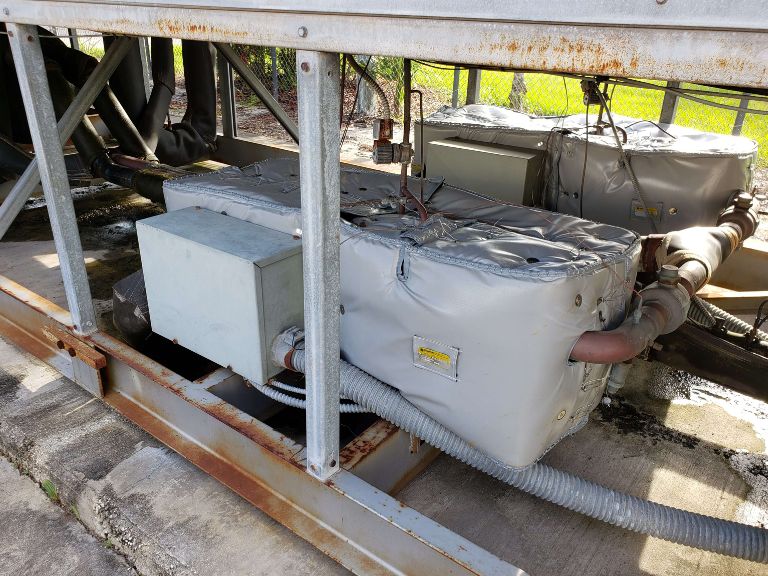Students, teachers, and staff are returning to school, which means school Uninsulated HVAC equipment conditioning the air inside their buildings will cause sound to emanate across classrooms and offices. Initially, students and teachers might hear the noise, but, as the days and weeks pass, the sound fades into the background. Or does it? What about the sound of a compressor cycling from on to off and back again. Most people tend to hear the noise and become distracted if for only a second or two.
In fact, a 2014 study reported by the Journal of Experimental Psychology states that interruptions of even two to three seconds were sufficient for the study’s participants to double the number of errors they made in an assigned task. Imagine the effect that a chiller has on learning when it’s running outside a classroom and within earshot of instructors and students. Unless students are exceptionally single-focused, they’re likely to find the job of learning harder when sitting within range of school uninsulated HVAC equipment.
Case in Point
The State University of New York College at Oneonta covered two compressors on a Trane Model RTAA Rotary Liquid Chiller and reduced the noise level affecting classes at the nearby Human Ecology Building. The SUNY staff covered the compressors with reusable acoustic blankets.
Before covering the compressors with a set of reusable acoustic blankets (designed specifically for school uninsulated HVAC equipment such as liquid chillers) instructors were distracted by the operation of the chiller’s compressors and fans. Although elastomeric vibration eliminators can reduce structurally transmitted sound, the chiller’s uninsulated compressors disturbed instructors and students in class.
The SUNY facilities team thought there weren’t any viable options for reducing the noise emanating from the chillers. Sometimes that frustration stems from believing a solution would be too expensive, other times the situation and system look too complicated to insulate. Although compressors have some unique geometries, there is always a way to accommodate that.
Once the team installed the blankets, the SUNY Oneonta facilities workers found the product performed well. The facility manager’s workers were able to install the blankets themselves, and they go on and come off easily. Most importantly, SUNY Oneonta’s facility manager, students, and instructors say the sound is noticeably different, since putting the reusable acoustic blankets on. After measuring the performance of the reusable acoustic insulation and comparing it to the uncovered compressors, there has been a reduction in noise of 6 dBA.
What’s behind the success?
There are several keys to successfully using reusable thermal and acoustic insulation blankets. First, to achieve a remarkable reduction in sound energy, buyers must select a product that’s designed and made with CAD and CNC technology. Computer numerical control, or CNC, depends on computer aided design, or CAD, software. The computer program interprets a design and moves the cutting tools on a CNC machine to achieve a precise cut and fit along multiple axes. A CAD-CNC approach creates an acoustic or thermal insulation blanket that precisely fits the application like the compressors mentioned above. There is no one-size-fits-all approach to effectively reducing sound energy. A blanket that works requires adhering to specifications for materials and fit. Second, once a manufacturer designs a blanket to the appropriate specifications, the blanket maker must test the product in the lab (e.g., ASTM and ISO) as well as in the field (i.e., on specific applications).
To learn how a Shannon GES acoustic blanket can protect the people inside your facility, reduce unwanted noise, and ensure sustainability, contact us today.

